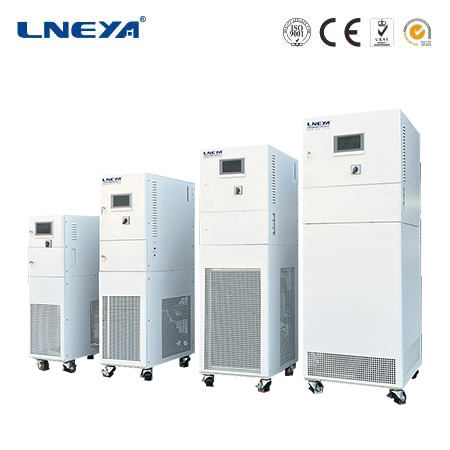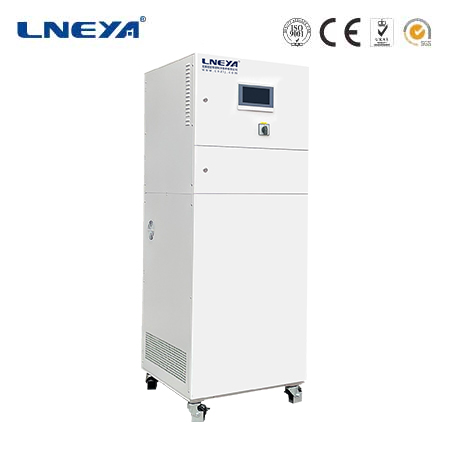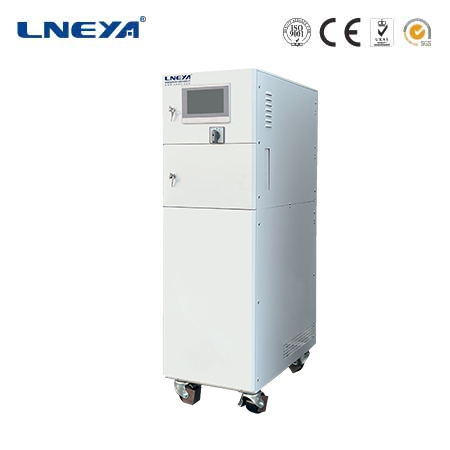small energy efficient heater
Small Energy Efficient Heater: A Comprehensive Guide
In an era where energy conservation is not only an environmental imperative but also a means of reducing household and business expenses, small energy efficient heaters have emerged as a practical solution for targeted heating needs. These compact devices are designed to provide warmth to specific areas without consuming excessive amounts of energy, making them suitable for a wide range of applications from residential rooms to small commercial spaces. This guide will explore the various aspects of small energy efficient heaters, including their types, working principles, energy – saving features, applications, selection criteria, and maintenance requirements.

Types of Small Energy Efficient Heaters
Electric Convection Heaters
Working Principle
Electric convection heaters operate based on the principle of natural or forced air circulation. Inside the heater, electric heating elements, often made of nichrome wire, generate heat when an electric current passes through them. As the air near the heating elements warms up, it becomes less dense and rises, creating a natural convection current. In forced – convection models, a fan is used to accelerate this process, blowing the heated air into the room more quickly. This continuous cycle of heating and air movement distributes warmth evenly throughout the space.
Energy – Saving Features
Many modern electric convection heaters come equipped with energy – saving features. Programmable thermostats allow users to set specific temperature levels and heating schedules. For example, you can program the heater to turn on 30 minutes before you wake up in the morning and turn off when you leave for work, ensuring that energy is not wasted during unoccupied hours. Some models also have open – window detection sensors that automatically shut off the heater when a significant drop in room temperature is detected, indicating an open window, thus preventing unnecessary energy consumption.
Radiant Heaters
Working Principle
Radiant heaters operate by emitting infrared radiation, which directly heats objects and people in the room rather than heating the air. The heating elements in radiant heaters, such as quartz tubes or ceramic plates, convert electrical energy into infrared rays. These rays travel through the air and are absorbed by solid objects, including furniture, walls, and people, causing them to warm up. This method of heating provides instant warmth, similar to the heat from the sun, and is highly effective for spot – heating specific areas.
Energy – Saving Advantages
Since radiant heaters focus on heating objects rather than the entire volume of air in a room, they can be more energy – efficient when used for targeted heating. For instance, if you only need to warm a small workspace or a seating area, a radiant heater can provide the necessary warmth without having to heat the entire room. Additionally, some radiant heaters are designed with adjustable power settings, allowing users to customize the heat output based on their needs and further optimize energy use.
Fan – Forced Heaters
Working Principle
Fan – forced heaters combine the principles of convection and forced air movement. They use electric heating elements to generate heat, just like convection heaters. However, a built – in fan actively blows the heated air into the room, accelerating the heat – distribution process. This results in faster warming of the space compared to natural – convection heaters. The fan ensures that the warm air is spread more evenly and reaches distant corners of the room more quickly.
Energy – Efficiency Enhancements
To improve energy efficiency, fan – forced heaters often incorporate smart control features. Thermostatic controls automatically adjust the power output of the heating elements based on the room temperature. When the desired temperature is reached, the heater either reduces its power or turns off the heating elements while the fan may continue to run to circulate the remaining warm air. Some models also have timer functions, enabling users to set the heater to operate for a specific duration, preventing it from running continuously and consuming excess energy.
Energy – Saving Mechanisms in Small Heaters
Insulation and Heat Retention
High – quality insulation is a key factor in the energy efficiency of small heaters. The casing of the heater is often lined with insulating materials, such as fiberglass or ceramic wool, which prevent heat from escaping to the exterior of the unit. This not only makes the heater safer to touch but also ensures that more of the generated heat is directed into the room, reducing energy waste. Additionally, some heaters are designed with reflective panels that help redirect heat back into the room, further enhancing heat retention and energy efficiency.
Smart Controls and Connectivity

The integration of smart technology has revolutionized small heater energy efficiency. Wi – Fi – enabled heaters can be controlled remotely through smartphone apps. Users can turn the heater on or off, adjust the temperature, and set schedules from anywhere, ensuring that the heater operates only when needed. For example, you can start pre – heating your room on your way home from work. Moreover, some smart heaters are compatible with voice – control assistants like Amazon Alexa or Google Assistant, providing hands – free operation and added convenience while optimizing energy use.
Energy – Efficiency Ratings
Understanding energy – efficiency ratings is crucial when choosing a small heater. In many regions, heaters are labeled with energy – efficiency certifications or ratings. For example, in the United States, Energy Star – certified heaters meet strict energy – efficiency guidelines set by the Environmental Protection Agency. These heaters are designed to use less energy while providing the same level of warmth compared to non – certified models. Ratings may also indicate the heater’s power consumption in watts or its heating capacity in British Thermal Units (BTUs) per watt, allowing consumers to compare different models and make informed decisions about energy – efficient options.
Applications of Small Energy Efficient Heaters
Residential Use
Bedrooms and Living Rooms
In homes, small energy efficient heaters are commonly used to supplement central heating systems in bedrooms and living rooms. They can provide additional warmth in specific areas, such as near a reading nook or a favorite chair. For example, a radiant heater can be placed beside a bed to keep the sleeping area warm during cold nights without having to heat the entire house at a high temperature. This targeted heating approach helps save energy and reduces heating costs.
Home Offices and Studios
With the rise of remote work, small heaters are essential for maintaining a comfortable temperature in home offices and studios. A fan – forced heater can quickly warm up a small workspace, ensuring a productive environment. Energy – efficient models with programmable thermostats allow home workers to set the heater to operate only during work hours, avoiding unnecessary energy consumption during breaks or after work.
Commercial Settings
Small Offices and Retail Stores
In small commercial spaces, such as local businesses, start – up offices, or small retail stores, small energy efficient heaters offer an affordable and efficient heating solution. They can be used to heat waiting areas, individual offices, or display areas. Electric convection heaters with zoned – heating capabilities can be installed in different sections of a store, allowing for independent temperature control and energy savings by only heating occupied areas.
Server Rooms and IT Closets
Server rooms and IT closets often require precise temperature control to ensure the proper functioning of electronic equipment. Small energy efficient heaters can be used to prevent cold spots in these spaces, especially in areas where equipment may generate less heat. Radiant heaters, in particular, can be strategically placed to warm specific components without overheating the entire room, maintaining optimal operating conditions while minimizing energy use.
Specialized Environments
Greenhouses and Grow Rooms
For hobbyists or commercial growers, maintaining the right temperature in greenhouses and grow rooms is crucial for plant growth. Small heaters can be used to provide warmth during cold nights or in cooler seasons. Energy – efficient models with thermostat controls ensure that the temperature remains within the ideal range for plant development, preventing damage from frost or cold stress while keeping energy costs in check.
Workshops and Garages
In workshops and garages, where traditional heating systems may not be practical or cost – effective, small heaters offer a convenient heating solution. They can be used to warm the area during winter months, making it comfortable to work on projects. Electric space heaters with safety features, such as tip – over protection and overheat protection, are ideal for these environments, providing warmth while ensuring safety and energy efficiency.
Selection Criteria for Small Energy Efficient Heaters
Heating Capacity
Room Size Consideration
Determining the appropriate heating capacity is essential for efficient operation. As a general rule, for well – insulated rooms, you need approximately 10 watts of heating power per square foot. However, factors such as the number of windows, ceiling height, and insulation quality can affect this calculation. In a room with large windows or high ceilings, more heating power may be required. For example, a 100 – square – foot room with average insulation may need a 1,000 – watt heater, but if it has large, drafty windows, a 1,500 – watt or higher – capacity heater might be more suitable.
Climate and Usage Requirements
The local climate and intended usage also play a role in selecting the heating capacity. In colder regions, heaters with higher capacities may be necessary to maintain a comfortable temperature. If the heater will be used for spot – heating a small area, a lower – capacity model may suffice. On the other hand, if you plan to heat an entire room continuously, a heater with sufficient capacity to handle the space’s thermal load is required.
Energy – Efficiency Ratings and Certifications
Understanding Ratings
As mentioned earlier, pay attention to energy – efficiency ratings and certifications. Look for heaters with high – efficiency ratings, such as Energy Star – rated models. These ratings indicate that the heater has been tested and meets specific energy – saving criteria. Additionally, some manufacturers may provide their own efficiency ratings or performance data, which can be compared to make an informed choice.
Long – Term Cost Savings
While energy – efficient heaters may have a higher upfront cost, they offer significant long – term cost savings in terms of reduced energy consumption. A more efficient heater will use less electricity to produce the same amount of heat, resulting in lower utility bills over time. Consider the potential savings when evaluating different models and factor them into your purchasing decision.
Safety Features

Overheat Protection
Overheat protection is a crucial safety feature in small heaters. When the internal temperature of the heater reaches a certain threshold, the overheat protection mechanism kicks in, automatically shutting off the heating elements to prevent overheating and potential fire hazards. This feature is especially important for heaters that are left unattended or operate for extended periods.
Tip – Over Protection
Tip – over protection is another essential safety feature, particularly for portable heaters. If the heater is accidentally knocked over or tilted beyond a certain angle, the tip – over switch will activate, turning off the heater to avoid accidents. This feature provides peace of mind, especially in households with children or pets.
Cool – Touch Exteriors
Heaters with cool – touch exteriors are safer to use, especially in areas where people may come into contact with the unit. Insulated casings or heat – resistant materials prevent the exterior of the heater from becoming too hot, reducing the risk of burns and making the heater safer for use around children and in high – traffic areas.
Noise Levels
Quiet Operation
In living and working environments, noise can be a significant annoyance. When choosing a small heater, consider its noise level, especially if it will be used in bedrooms, offices, or other quiet spaces. Some heaters, such as certain radiant heaters, operate silently as they do not have fans. Fan – forced heaters, on the other hand, may produce some noise due to the fan operation. Look for models with quieter fan motors or those designed for low – noise operation to ensure a peaceful environment.
Maintenance of Small Energy Efficient Heaters
Regular Cleaning
Heating Element and Fan Cleaning
For heaters with heating elements and fans, such as fan – forced heaters, regular cleaning is essential. Dust and debris can accumulate on the heating elements and fan blades over time, reducing the heater’s efficiency and potentially causing malfunctions. Use a soft brush or compressed air to gently clean the heating elements and fan blades. Make sure to unplug the heater before cleaning to avoid electrical hazards.
Filter Maintenance (if applicable)
Some heaters, especially those with air – filtration features, have filters that need to be cleaned or replaced periodically. A dirty filter can restrict air flow, making the heater work harder and consume more energy. Check the manufacturer’s instructions for the recommended filter – cleaning or replacement schedule and follow it to ensure optimal performance.
Component Inspection
Electrical Connections and Cords
Periodically inspect the electrical connections and power cords of the heater. Loose connections can cause electrical arcing, which is a fire hazard, and frayed cords can pose a risk of electric shock. If you notice any signs of damage, such as exposed wires or loose plugs, stop using the heater immediately and have it repaired or replaced by a qualified technician.
Thermostat and Control Checks
Test the thermostat and other control functions of the heater regularly to ensure they are working correctly. Set the thermostat to different temperature levels and check if the heater responds accordingly. If the thermostat is not functioning properly, the heater may not maintain the desired temperature, leading to either overheating or inefficient operation.
Seasonal Maintenance
Pre – Season Checks
Before the start of the heating season, perform a comprehensive check of the heater. Plug it in and test it to ensure it is heating up properly. Check all the safety features, such as the overheat protection and tip – over protection, to make sure they are functioning. Clean the heater thoroughly as described above to remove any dust or debris that may have accumulated during storage.
Off – Season Storage
If you do not plan to use the heater during certain seasons, store it properly. Unplug the heater and clean it thoroughly. Store it in a dry, cool place, preferably in its original packaging or a protective cover to prevent dust and damage. Avoid storing the heater in areas prone to moisture, as this can cause rust and other damage to the internal components.
In conclusion, small energy efficient heaters offer a practical, cost – effective, and environmentally friendly solution for targeted heating needs. By understanding the different types, energy – saving features, applications, selection criteria, and maintenance requirements, users can make informed decisions to choose the right heater for their specific situations. Whether it’s for enhancing comfort in a home, maintaining a productive work environment, or ensuring the proper functioning of equipment in specialized spaces, these heaters play a vital role in providing warmth while minimizing energy consumption and costs.
Related recommendations
small water chiller units
467What are Small Water Chiller Units?Small water chiller units are compact, self - contained cooling systems designed to lower the temperature of water, which is then used to remove heat from vario...
View detailschiller usa
283IntroductionChillers play a vital role in the heating, ventilation, air - conditioning, and refrigeration (HVACR) systems across the United States. From maintaining comfortable indoor environment...
View detailslaboratory water heater
174Laboratory Water Heater: Working Principles, Types, and ApplicationsIn the intricate world of scientific research, maintaining precise temperature control is often a critical factor in the succes...
View detailsgerman chiller manufacturer
660German Chiller Manufacturer: Innovation, Quality, and Sustainability Germany's engineering prowess extends to the chiller manufacturing industry, with several companies leading the way in innov...
View details
 LNEYA Thermal Test Chillers
LNEYA Thermal Test Chillers







HelloPlease log in